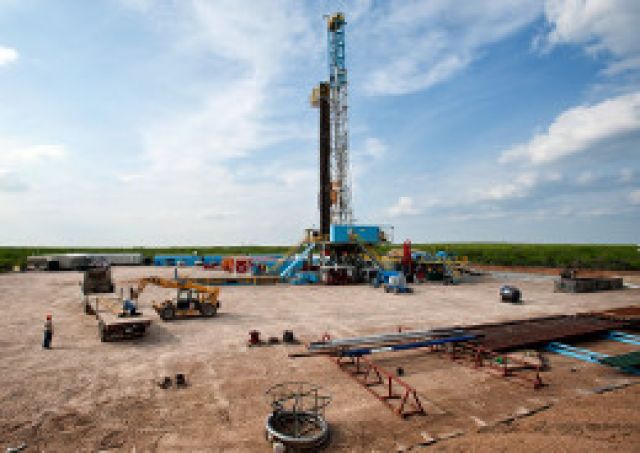
Two years have passed since EOG Resources Inc. (NYSE: EOG) announced a suite of 16 "monster wells" in the Eagle Ford Shale. As intimidating as that might have been for children at bedtime in Eagle Ford counties like Karnes or Gonzales, Texas, the event signaled commencement of a trend that is now coming of age in tight oil and gas.
The monster wells branding has since faded from industry jargon and been replaced by interchangeable terms such as upsized fracks, upsized completions or enhanced completions.
However it is named, the trend is worth following. Sometimes, the next big thing in oil production is not a new play or field. Rather, it is the ability to solve the engineering Rubik’s cube that generates significant new oil.
Originally, the term monster wells referred to the sudden jump in initial production (IP) for EOG’s Eagle Ford horizontals. IPs exceeded 2,500 barrels of oil per day (bo/d) and topped 4,000 barrels of oil equivalent per day (boe/d) in some cases. At the time, the development was a mystery. Why was one operator consistently outdistancing peers in similar rock when it came to a steplevel change in IPs—monster wells?
The only clue from state production records was a massive injection of sand, sometimes four or five times the traditional volume used in fracture stimulation. In retrospect, it was more than sand alone. Enhanced completions—today’s version of monster wells—incorporate multiple characteristics, including extended laterals when acreage positions permit.
Secondly, operators are adding more stages, not just from extra lateral length, but more stages packed more closely together.
Spacing has shrunk to 200 feet in several markets as stage counts jumped from 17 or 18 per well as recently as nine months ago to 35, 40 and even more than 60 for extended laterals today. Meanwhile, service companies are discussing engineered perforations, indicating a strategic approach to creating openings between stages.
Enhanced completions usually include large volumes of proppant per stage in a massive slickwater treatment. In the Eagle Ford, average proppant per stage rose from fewer than 100,000 pounds per stage nine months ago to nearly 400,000 pounds in the summer of 2014, according to Hart Energy market intelligence surveys. Where operators were using less than 2 million pounds of proppant per lateral previously, sand use ballooned to as high as 11- or 12 million pounds per lateral—with up to four laterals on a well pad.
While operators have demonstrated a variety of proppant preferences across sand grades, one characteristic of enhanced completions is greater use of 100-mesh sand.
Think of 120 tons of a talcum powder-like proppant, or more, per stage. Now imagine doing that a couple dozen times in a lateral—and 100 times or more on a multiwell pad. That image illustrates the greater downhole intensity in enhanced completions.
The theory is that finer mesh sand aggregates into isolated pillars on flowback, maintaining openings in the fractured formation.
This juices IPs and appears to slow historically steep decline rates, allowing operators to boost type curves and estimated ultimate recovery (EUR). Marathon Oil Corp. (NYSE: MRO) disclosed a 25% improvement in 180-day cumulative production in its second-quarter 2014 earnings call due to enhanced completions.
SM Energy Co. (NYSE: SM), Concho Resources Inc. (NYSE: CXO), Oasis Petroleum Inc. (NYSE: oAS) and others are now citing enhanced completions as a factor in second-quarter production gains.
Enhanced completions have become standard practice in the Eagle Ford, and the practice is spreading to other plays, including the Bakken Shale, the Cana Woodford, and the Permian Basin.
The topic is not without controversy. The impact on decline rates, EUR and reservoir integrity is not fully proven. Is the industry getting more goody out of the ground, or simply getting the same amount of goody more quickly? Only time will tell. While operators promote the industry to the financial community on the basis of large EURs (and potential reserves), operators really drill on net present value and how fast a well pays out, factors positively impacted through enhanced completions.
Enhanced completions can add 10% to well cost but generate greater flush production.
If enhanced completions work long term, the process will become one more transformative event moving the industry forward. Often, recovery rates for tight oil remain as low as 3%. Adding another percentage or two has enormous potential, not just for operator bottom lines, but for tight formation oil production. If enhanced completions play out, it could be a monster.
Recommended Reading
Wind Energy Developer Ørsted Sees Profit Rise, US Challenges Remain
2024-11-05 - Danish wind company Ørsted reported a 4% increase in earnings and fewer impairments compared to a year ago but faced challenges with U.S. wind.
Ørsted Farms Down Stake in US Solar Projects in $572MM Deal
2024-12-19 - The deal was reached with Energy Capital Partners for stakes in Mockingbird Solar and Sparta Solar in Texas as well as Eleven Mile Solar in Arizona.
Energy Transition in Motion (Week of Nov. 1, 2024)
2024-11-01 - Here is a look at some of this week’s renewable energy news, including progress on the largest U.S. offshore wind project being developed.
Energy Transition in Motion (Week of Nov. 8, 2024)
2024-11-08 - Here is a look at some of this week’s renewable energy news, including a solar panel deal involving a 5-gigawatt solar module facility south of Dallas.
Energy Transition in Motion (Week of Jan. 10, 2025)
2025-01-10 - Here is a look at some of this week’s renewable energy news, including guidance on technology-neutral clean electricity credits.
Comments
Add new comment
This conversation is moderated according to Hart Energy community rules. Please read the rules before joining the discussion. If you’re experiencing any technical problems, please contact our customer care team.




